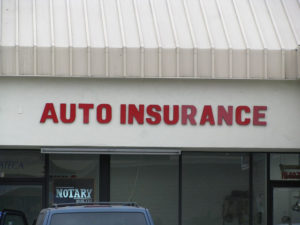 Car insurance is considered complicated by most people. However, a basic understanding of the various coverages available takes away the guesswork and helps you know what you need, why you need it, and exactly what it will cover.
Car insurance is considered complicated by most people. However, a basic understanding of the various coverages available takes away the guesswork and helps you know what you need, why you need it, and exactly what it will cover.
The greatest mistake providers make is to tell you that the other driver’s insurance will pay your medical bills. That payment by the driver who caused the wreck only happens at the very end, which means you need to keep paying your medical bills to avoid going into collections. See Medical Payments section later in this article for more information.
Bodily Injury
Most states require that drivers carry bodily-injury liability insurance to cover the cost of medical treatment, rehabilitation, legal fees, pain and suffering, and burial expenses of passengers, other drivers and their passengers, pedestrians and bicyclist who are injured in a crash caused by you or someone in your household. The minimum coverage requirements in most states are too low to protect the assets of drivers involved in serious crashes ($25,000 per person/$50,000 per crash in Ohio, for example). We recommend purchasing at least $100,000 per person/$300,000 (100/300) per crash in coverage in order to protect others and to protect you from having someone go after your house or other assets to pay for injuries you caused. However, lookout for intra-family exclusions which prevents your own family from being covered if the crash is your fault. (Here is some help on understanding the types of coverage.) help recommended
Property Damage
Property damage liability insurance covers the repair or replacement of the cars and property of other drivers, and like bodily injury, states mandate the minimum amount of property damage coverage that must be carried. The requirements in Ohio are $25,000, (which may not go very far now that the average cost of a new car is around $36,000, according to Forbes). If your vehicle is worth more than $25,000.00 or would cost more than that to replace it, then you need to consider Collision and Comprehensive coverage talked about later in this article.
Coverage for Passengers
Although passengers don’t typically have any responsibility for an automobile crash and shouldn’t be penalized for something they didn’t cause, they often suffer injuries. Passengers can receive compensation for their injuries by filing a claim under the at-fault driver’s insurance. Since they weren’t driving, they likely won’t be considered at fault for the crash, and they might even be able to file multiple claims if two cars or more were involved. However, as noted above, when buying insurance look for insurance that doesn’t contain an intra-family exclusion.
Uninsured/Underinsured Motorist Coverage
Uninsured/underinsured (UM/UIM) motorist coverage will protect you and your passengers. UM/UIM covers the cost of your injuries and losses as well as those of your passengers, for anything that the other driver cannot pay for. It may even cover damage to your vehicle if you are the victim of a hit and run driver. Even if UM/UIM motorist coverage is not legally required in every state, it is the most important insurance to have, since an estimated 13 percent of all motorists are uninsured or purchase only the State minimum amount required. UM/UIM coverage is also very affordable given the protection it provides, which could include outstanding medical bills, lost wages, the cost of fixing or replacing your vehicle, damages and for pain and suffering, including any permanent injuries.
Medical Payments Coverage
Medical payments coverage, or MedPay, is coverage that can be added to your automobile insurance policy to pay crash-related medical expenses up to a certain amount, based upon the coverage purchased. Typical medical pay limits can fall anywhere between $1,000 and $10,000, although much greater amounts are also available. MedPay coverage is usually relatively inexpensive, and will pay your bills immediately–including co-pays, and deductibles, (submitting your explanation of benefits from your health insurance company is a great way to do this). It will cover you and your passengers in the event of an crash no matter who was at fault. However, in the case of a catastrophic crash involving multiple injuries, it may not take long for your MedPay coverage to be used up, whether or not your crash-related bills are completely paid. It is also important to know that this amount is usually subtracted from your UM/UIM available coverage.
Personal Injury Protection (PIP)
Commonly known as no-fault insurance, personal injury protection (PIP) covers medical expenses, rehabilitation, wage loss, in-home care, and funeral costs for household members, regardless of who was at fault for the crash in question. As of November 2016, PIP is mandatory in 12 states and Puerto Rico. Drivers in three states are allowed to choose whether they will be held to a no-fault system.
Collision and Comprehensive
Collision coverage pays to replace your vehicle after a crash. Comprehensive coverage also pays if your vehicle or its contents are stolen, or if your car is damaged by fire or water. If you financed the purchase of a new car, you’ll be required to purchase both collision and comprehensive coverage. For cars worth less than $5,000, comprehensive and collision coverage aren’t typically considered worthwhile since the premiums you’ll pay will likely exceed the payout, even if your vehicle is totaled. In all cases, you should consider whether you need to purchase gap insurance. Gap insurance is used to pay off the difference between the insurance payment and the amount of financing still owed on your vehicle at the time of the crash.
Rental Car Coverage
Although relatively low in cost, rental car coverage is not necessary if you don’t rent cars often or if you rent with a major credit card, you will likely automatically have car rental insurance. Depending on the terms of your credit card agreement, the company may pay for any damage to the rental vehicle that happens during the course of the rental, although credit cards rarely provide liability coverage. However, you do want to check to see that you have rental care coverage available in the event your vehicle needs to be repaired or replaced and you need a vehicle to be provided to you in the meantime. Also check to see that this dollar amount is enough to cover vehicle rentals in your area.
If you were injured in an automobile crash and have questions regarding insurance coverage, contact the attorneys at Murray & Murray Co., L.P.A. today.
The post How to Know If You Have the Right Insurance Coverage appeared first on The Legal Examiner.
SOURCE: The Legal Examiner – Read entire story here.



